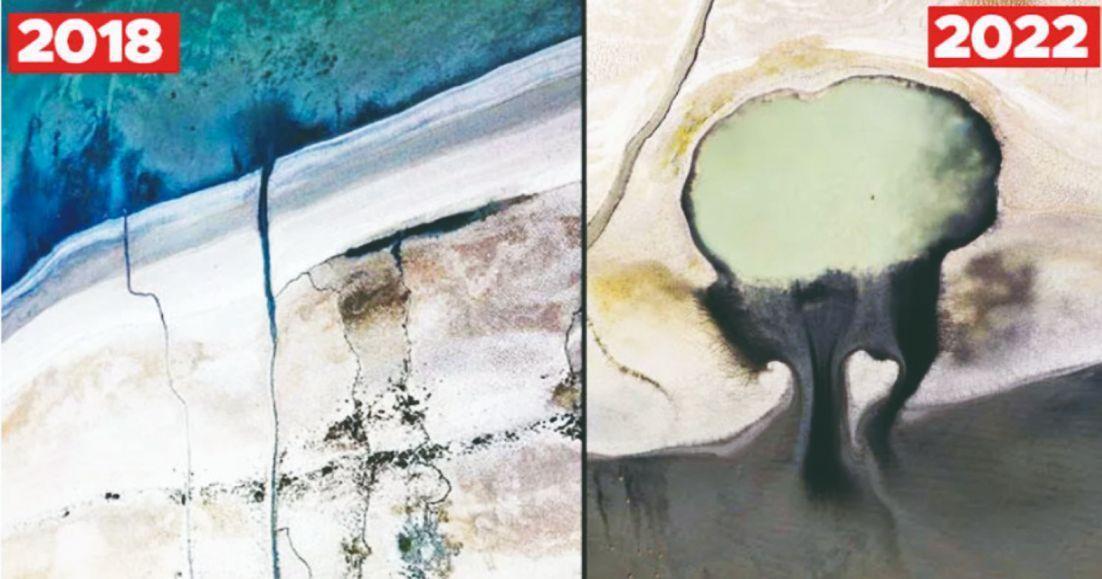
Two photographs, one taken in 2018 and the other this year, of Lake Burdur, have shown how Türkiye’s seventh largest lake is disappearing.
The lake came to the country’s agenda when, in 2018, photographer Tamer Yılmaz shot an aerial photo of two streams leaking from small puddles in the dying areas of the lake.
Yılmaz had uploaded the photo and called the two streams “Tears of Lake Burdur.”
On Sept. 6, Yılmaz uploaded a second photo of the shrinking lake and large streams showing the region where drying is rapidly increasing.
This time, he shared photos with the note, “Lake Burdur is bleeding.”
Yılmaz said, “As the lake recedes, the headwaters on the lake floor are also exposed one by one, and the waters coming out of these headwaters are also trying to reach the lake. But here, unlike the other headwaters, it is as if blood is crying.”
Evaporation, pollution, tens of thousands of legal and illegal drillings, ponds, and dams built in the streams that feed the lake have caused Lake Burdur to dry up. The border of Lake Burdur to Isparta has completely disappeared.
The Turkish Nature Conservation Association (TTKD), which conducts research in many lakes such as Eğirdir, Beyşehir, Salda and Burdur, made a statement on the subject. Dr. Erol Kesici, science advisor of TTKD stated the lake surface has shrunk by 45 percent.
Stating that the lake has lost 50 percent of its water capacity, which was 7.5 billion tons 55 years ago, Dr. Kesici underlined only 3.4 billon tons of water capacity remains.